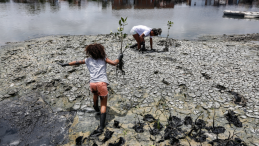Our time is characterised by various environmental challenges and increasing urbanisation. Responsible resource management has never been more necessary for sustainable development. The vision for a “House of No Waste” (HoW) outlines an ambitious and innovative project that addresses these pressing issues while housing public facilities in a groundbreaking building built primarily from waste materials. This project is guided by the principles of the European Union’s 9Rs for a circular economy: Refuse, Rethink, Reduce, Reuse, Repair, Refurbish, Remanufacture, Repurpose, and Recycle, in line with the United Nations’ ambition for a “pollution-free planet”. It serves not only as a beacon of sustainability but also as a testimony to good governance embedded in a future-oriented culture that is at the heart of the UN 2.0 vision.
The vision for a “House of No Waste” (HoW) is to create a pioneering public sector building that exemplifies environmental stewardship, circular economy principles, and human-centred design. HoW takes a circular economy approach where waste streams in the local (and future) context are carefully identified, selected, transformed, and reused to create a comfortable and environmentally friendly workplace. An international architectural competition shall invite a broad range and high level of innovation in design solutions for the construction of HoW. As a project of public significance and pioneering spirit, a wide degree of design investigation is required. The competition shall be developed with experts from different disciplines – architects, civil engineers, material scientists, waste scientists, sustainability scientists, and social scientists – to best centre the Resource Nexus. Altogether, the architectural competition shall generate public interest and promote a high level of design and scientific excellence.
This project is funded by the German Federal Ministry of Education and Research (BMBF).




